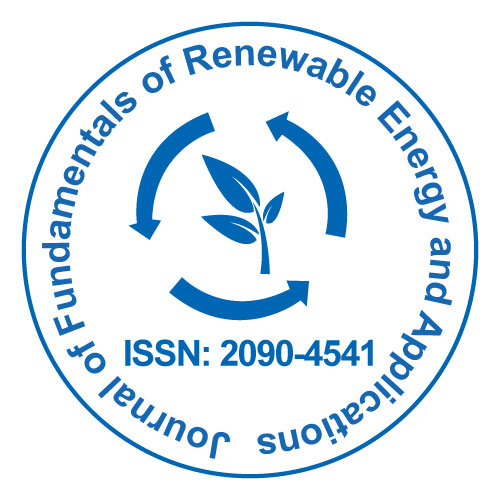
Journal of Fundamentals of Renewable Energy and Applications
Open Access
ISSN: 2090-4541
+44 1300 500008

ISSN: 2090-4541
+44 1300 500008
Perspective - (2022)Volume 12, Issue 1
Biomass is a naturally occurring carbon resource. It is used to generate syngas. However, in an effort to reduce our reliance on fossil fuels, new bioprocesses have recently been developed to produce a variety of biofuels and power. Because of its organic nature, carbon stability, and abundant supply, biomass is regarded as a suitable source of renewable energy and bio based products.
The classification and availability of biomass feedstock for these products are critical factors in determining the most effective biomass application. The feedstock classification provides relative insight into the composition and preferred conversion process, whereas the feedstock availability is important when considering the accessibility of the biomass source.
A thorough understanding of the feedstock allows for a comprehensive evaluation of biomass energy production procedures in terms of supply chain economics and optimal reactor designs. When considering biomass for bioenergy production, three key factors must be considered they are:
• Considering the availability of biomass feed stocks
• Considering the economic principles and logistical support of biomass acquisition, storage, and transport
• Exploration and development of technologies for converting biomass feedstock into value-added products.
The use of biomass as an energy source is primarily determined by the abundance of sustainable resources in a given region. A feedstock's composition is related directly to the climate and growth environment, under which it is produced. As a result, categorizing biomass by source and geographical origin distinguishes the key fuel attributes, accessibility, and potential uses of each biomass feedstock based on geographical location. We divide biomass feed stocks into two categories in this text, as we do in many other reports:
• Hybrid energy plants
• Byproducts and waste material
• Crop residues, which are materials other than the grain of the crop grown; or hybrid energy plants, which are developed primarily for energy utilization.
Currently, biomass, including fossil fuels, accounts for approximately 98 percent of all energy consumed by humans. Other sources of energy account for about 2% of total energy. Basic and applied research in photosynthesis mechanisms could provide material for fully utilizing biomass's photosynthetic potential. The conversion of biomass produced to food or feed, fiber and chemical products, and fuel should be optimized.
Unlike primary protein-poor biomass, microbial high-quality biomass like yeasts, bacteria can be produced at very high yields per unit volume. The advancement of technology may also help to reduce the still-high manufacturing costs of biomass. Microbial biomass should be created by refining low-cost organic and inorganic wastes. According to the report, biomass includes all plant-derived molecules such as grain, starch, sugar, oil, and waste products, as well as the plant structural components cellulose, hemicellulose, and lignin. Animal matter and fossil fuels are prohibited. While biomass's diversity of resources is strength, it also poses a challenge: different facilities are required to convert the vast selection of atoms from biomass into the hydrocarbons required for transportation fuel. Furthermore, significant infrastructure changes would be required to extract the multiple potential sources.
Citation: Lyons L (2022) Role of Biomass as a Renewable Energy and its Applications. J Fundam Renewable Energy Appl. 12:286.
Received: 24-Feb-2022, Manuscript No. JFRA-22-18141; Editor assigned: 28-Feb-2022, Pre QC No. JFRA-22-18141 (PQ); Reviewed: 18-Mar-2022, QC No. JFRA-22-18141; Revised: 28-Mar-2022, Manuscript No. JFRA-22-18141(R); Published: 05-Apr-2022 , DOI: 10.35248/2090-4541-22.12.286
Copyright: © 2022 Lyons L. This is an open-access article distributed under the terms of the Creative Commons Attribution License, which permits unrestricted use, distribution, and reproduction in any medium, provided the original author and source are credited.